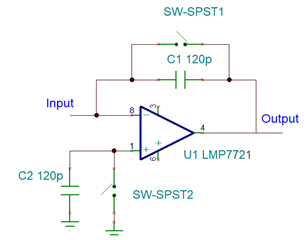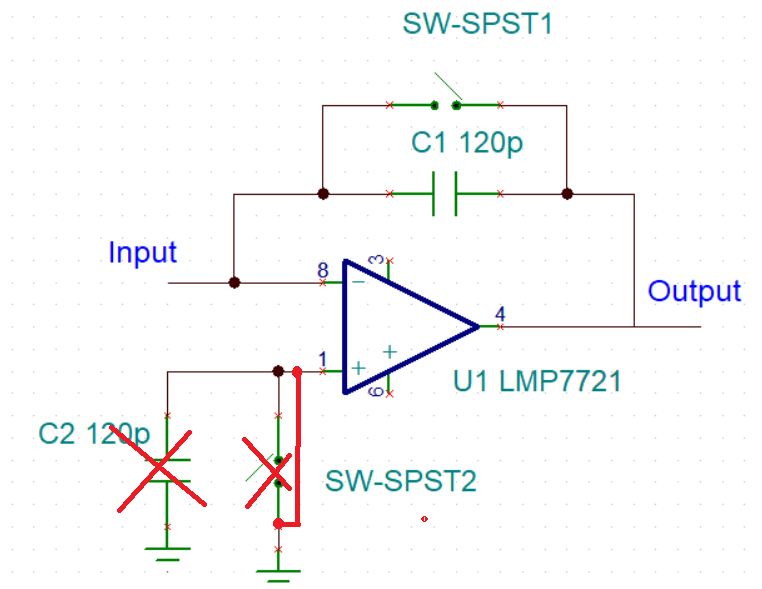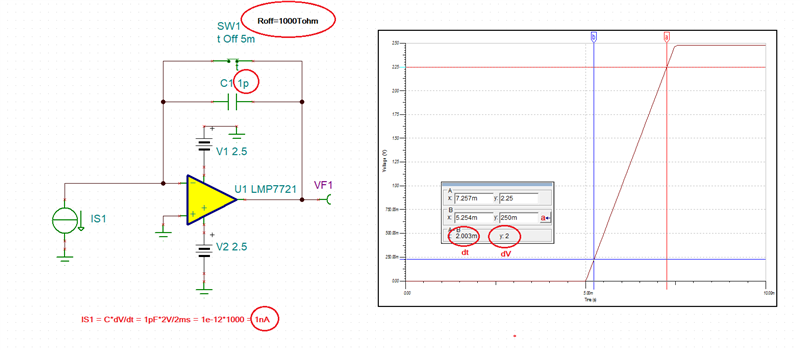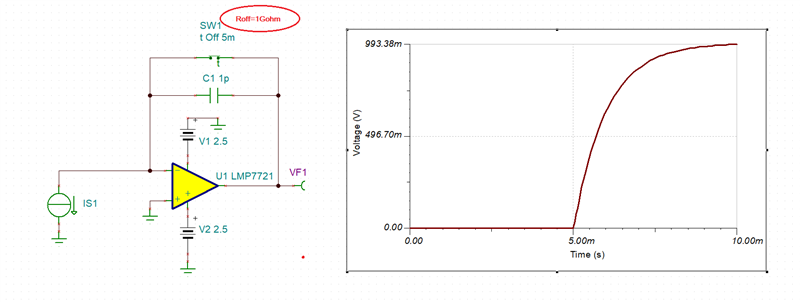Hi
I am using the LMP7721 as the input stage to a circuit used to measure electrostatic charge.
The amplifier is configured such that the Voltage Supply rails are +/- 2.5V
The remaining connections are thus;

Theory of operation is the switches across the capacitors C1 and C2 close to discharge any residual charge and then opened ready to measure the charge applied to a sense plate connected
to the input. The magnitude of the charge applied equates to a maximum Voltage across the capacitor C1 of approximately 0.8V. However, before any charge is applied the output begins to drift.
The magnitude of the drift is significant - up to 2.1V over a 30s period.
I have used the circuit configuration before but the original amplifier (OPA128 - selected because of it's very high input impedance) is now obsolete.
I selected the LMP7721 because of the very high input impedance and extremely low input bias current, but the drift is a major issue.
Can you assist with this please...?
If the LMP7721 was a poor choice, could you offer a suitable alternative..?
Thanks




